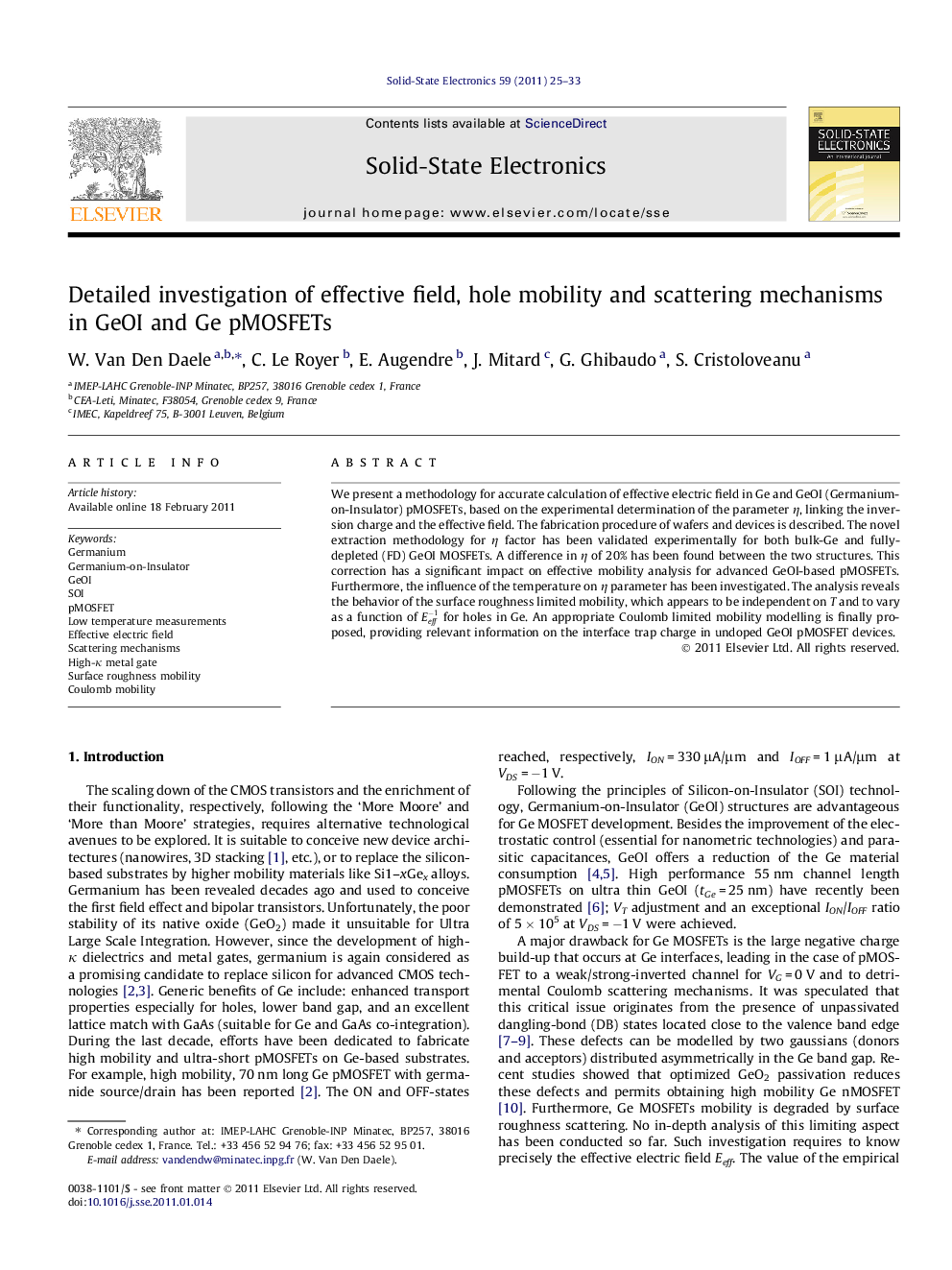| Article ID | Journal | Published Year | Pages | File Type |
|---|---|---|---|---|
| 753105 | Solid-State Electronics | 2011 | 9 Pages |
We present a methodology for accurate calculation of effective electric field in Ge and GeOI (Germanium-on-Insulator) pMOSFETs, based on the experimental determination of the parameter η, linking the inversion charge and the effective field. The fabrication procedure of wafers and devices is described. The novel extraction methodology for η factor has been validated experimentally for both bulk-Ge and fully-depleted (FD) GeOI MOSFETs. A difference in η of 20% has been found between the two structures. This correction has a significant impact on effective mobility analysis for advanced GeOI-based pMOSFETs. Furthermore, the influence of the temperature on η parameter has been investigated. The analysis reveals the behavior of the surface roughness limited mobility, which appears to be independent on T and to vary as a function of Eeff-1 for holes in Ge. An appropriate Coulomb limited mobility modelling is finally proposed, providing relevant information on the interface trap charge in undoped GeOI pMOSFET devices.
Research highlights► In depth characterization of fully-depleted pMOSFET on GeOI substrates. ► A methodology to extract the empirical factor on FD-GeOI is proposed. ► We demonstrated the difference of in Ge and GeOI based pMOSFET. ► A detailed investigation of surface roughness scattering for holes in GeOI is provided. ► Correlation between interface traps and coulomb hole mobility is provided.
